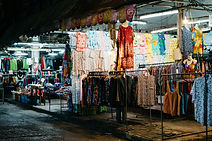

Problems
Problems of the Fast fashion industry
The fast fashion industry poses several environmental, social, and economic problems. Here are some of the key issues.
Environmental Problems

1. Water Usage
The fashion industry is responsible for about 20% of global wastewater and 10% of global carbon emissions, which is more than all international flights and maritime shipping combined.
It takes approximately 2,700 liters of water to produce one cotton shirt, enough for one person to drink for 2.5 years
2. Pollution
Textile dyeing is the second largest polluter of clean water globally, after agriculture. The industry releases half a million tons of microfibers into the ocean every year, equivalent to 50 billion plastic bottles


3. Waste
An estimated 92 million tons of textile waste is created annually by the fashion industry. This waste often ends up in landfills or is incinerated, contributing to pollution and greenhouse gas emissions.
In the UK alone, around 350,000 tons of clothing end up in landfills every year
Social Problems
1. Labor Exploitation
Many workers in the fast fashion industry are subject to poor working conditions, long hours, and low wages. For example, garment workers in Bangladesh often earn as little as $96 per month, far below the living wage.
Reports of child labor are prevalent in fast fashion supply chains, with children working long hours in hazardous conditions to meet production demands .


2. Health Risks
Workers in textile factories are frequently exposed to dangerous chemicals and pollutants without adequate protective measures, leading to severe health issues such as respiratory problems and skin diseases
Economic Problems
1. Unsustainable Business Model:
The fast fashion business model is based on rapid production and turnover of clothing, encouraging a culture of disposability. This model not only strains environmental resources but also leads to economic instability for workers reliant on unpredictable and often temporary employment


2. Market Saturation
The constant introduction of new collections and the low cost of fast fashion items lead to market saturation, reducing the perceived value of clothing and contributing to a throwaway culture